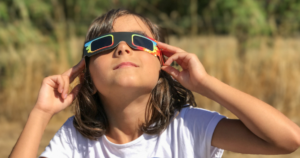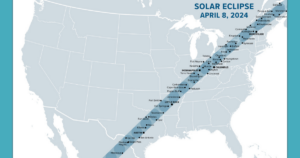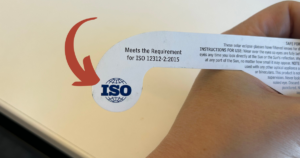If you can't find your eclipse glasses from 2017, don't worry; there are plenty to go around. The American Astronomical Society has a list of approved vendors where you can buy glasses. But with the eclipse around the corner, supplies may be running out, and prices may be rising.
Instead, check out your local library, school, or community groups like local astronomy clubs to grab a pair. We found a directory of libraries across the US with glasses available.
If you don't have eclipse glasses, there are other ways to view the eclipse safely. One option is to make a pinhole projector using a piece of paper. Just punch a small hole in the paper and hold it up to the sun, letting the sunlight pass through the hole and projecting an image of the eclipse onto the ground or another surface. This method is safe and easy, perfect for classrooms or groups.
The 2024 solar eclipse is gearing up to be a stellar event for skygazers across North America. By following these tips and using proper viewing methods, you can enjoy this jaw-dropping spectacle without risking your eyes.






